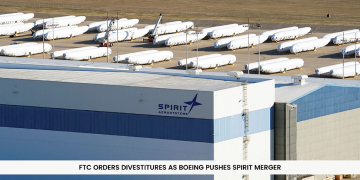The second largest cost to most organisations is the real estate and facilities they occupy, and right now all organisations are rethinking how they plan to use their workspaces moving forward. Facilities and Real-Estate Professionals globally are concentrating their efforts on providing an exceptional workplace experience for all occupants of their buildings in an emerging hybrid workplace world. This includes re-focusing their space to enhance collaboration, ideation, and culture building while also rationalizing their building portfolio. These efforts are focused on maximizing employee retention while ensuring the organization has the right real-estate to support their mission now and into the future.
Considering the above-mentioned factors, we bring your attention to a platform that is well-known for helping to better organise, comprehend, and manage those facilities in a way to effectively provide the ideal workplace experience for every employee and visitor alike.
FM:Systems all-in-one workplace management platform helps the world’s largest organisations access, manage, and measure every part of their real estate portfolio. It creates high-performance workspaces and provides clarity and insight into strategic real estate decisions with its simple solutions for hybrid work, space and facility management, workplace analytics, and more.
Meet the Man at the Helm
Kurt von Koch, CEO and Chairman. With more than 20 years of experience in cutting-edge software solutions, Kurt von Koch is a recognised leader in the IWMS and CAFM corporate software sectors. Kurt defines the company’s strategic direction as CEO of FM:Systems and collaborates with each department to maintain a culture that prioritises the client’s needs, operational effectiveness, and corporate expansion. Kurt began working for FM:Systems in 2006. Since then, he has served in a variety of capacities, most recently as president. He holds a BA in both political science and history.
When asked about his professional background, Kurt stated: “When I acquired a position with the State of Delaware during my time in college, my career in technology officially began. After a plethora of little tasks, I was asked to assist the facilities and real estate team with a “restacking.” “Restacking” is simply when an organisation redistributes seating and spaces among employees across a building or real estate portfolio in order to better utilise the space and generate better interactions for the employees.”
He continued, “This is a significant undertaking for the organisation, and to accomplish it successfully, you need to carefully determine where on the floor plan each department will be allocated space as well as which individuals and pieces of furniture will need to be moved. In the mid-1990s, restacking actually required coloured pencils, scissors, and a tonne of masking tape to reposition people and furniture on the printed floor plans.
I understood that software could make this a lot easier and would produce better results for everyone involved because I grew up in a small college town with access to software and networked computers at a very young age.
After a few years, I was employed by a GIS, or geographic information system, software firm, where we assisted local governments in gathering and disseminating data online on real estate and tax records.
While doing this, I was astounded by the software’s ability to transform tabular, difficult-to-understand data into a map, where it was immediately easier to understand visually and take appropriate action.
It was then when I realised this was going to be important when FM:Systems approached me about doing what we were doing outside the building with GIS and instead used a similar approach for visualising data on floor plans within the building.”
Clientele at a Glance
FM:Systems helps clients better understand the performance of their facilities while delivering an excellent working experience for both employees and visitors in those workplaces. The company focuses on four core areas, including large enterprises, government, higher education, and healthcare facilities.
Potential data sources are everywhere in these workplaces, helping its clients have more data about their workplaces than ever before, whether it be from work-point sensors that alert facilities teams when someone arrives, smart lights that detect movement, or WiFi that notice a new device has entered a zone. The team’s main responsibility is to assist them in making sense of all this data and then provide them with the technology they require to design the optimal working environment for each of them.
The Key Factors That Make FM:Systems “the Blue Diamond” of the Domain
FM:Systems focuses on creating exceptional interactions for customers. Throughout the entire client journey, this attention is present. They ask themselves how they can make the organisation’s experience more seamless, advantageous, and valuable at each step along the way.
The company strives hard to bring exceptional value to its customers and to provide that value in a way that enables the consumers to utilise their second largest cost and make the best decisions possible.
FM:Systems has created its unique position by providing intuitive, powerful solutions that enable them to be more efficient, provide better outcomes, and be prepared to respond to evolving workplace needs.
FM:Systems brings a broad range of solutions to its clients, which helps them tackle today’s and tomorrow’s biggest real estate and facility challenges. Their solutions support the identification, planning, and provision of world-class work environments for their staff, the rationalisation and optimisation of their real estate assets, and the accomplishment of their sustainability objectives.
Empowering Businesses to Achieve Their Goals
With every organisation currently revising their plans for how they will use their workplace, data will be essential to inform these potentially costly decisions. While some organisations will opt to support employees living and working completely apart from one another, only reuniting on particular occasions, others will enable hybrid arrangements in which some employees come into the office on particular days of the week, month, or quarter.
Meanwhile, some haven’t even left the office and/or have already returned to the office full-time. In any of these cases, how organisations approach their work models reveals a lot about the culture they want to establish and maintain. It is crucial to have the appropriate workplace management solutions in place to better enable the work experience the organisation wishes to deliver and to understand what actually occurs in the workplace for future adjustments.
Understanding and controlling the use of resources, such as energy, water, and waste, within their facilities is another major difficulty that the clients face on a worldwide scale. Many of the clients are putting a lot of focus on environmental sustainability, whether it’s because they have to comply with ESG (environmental, social, and governance) regulations or because they just want to cut expenses and green up their real estate. FM:Systems solutions give an organisation’s complete portfolio a unique perspective and support its sustainability activities and objectives.
Future Prospects
Combining the building’s management systems for heating, cooling, and general operations with the utilisation data provided by IoT and smart buildings has significant potential. Currently, these systems don’t function well together; therefore, there is a big chance for us to provide our clients with actionable building insights that will enable them to save money and reduce their energy usage in support of sustainability programmes.
From Kurt’s Desk: The Key Learnings Throughout the Journey
“This extensive work-from-anywhere (WFA) experiment that we have been doing over the last three years has taught us a lot. We’ve discovered that many employees value the freedom that WFA offers, and some even demand it. We have also learned that a company’s culture is developed and maintained in large part at its actual workplace. There is a huge opportunity to use the data generated by our ever-smarter buildings to create a workplace that not only performs better for the occupant but also performs better for our environment and sustainability goals as organisations start to understand what the modern workplace means to them.”






